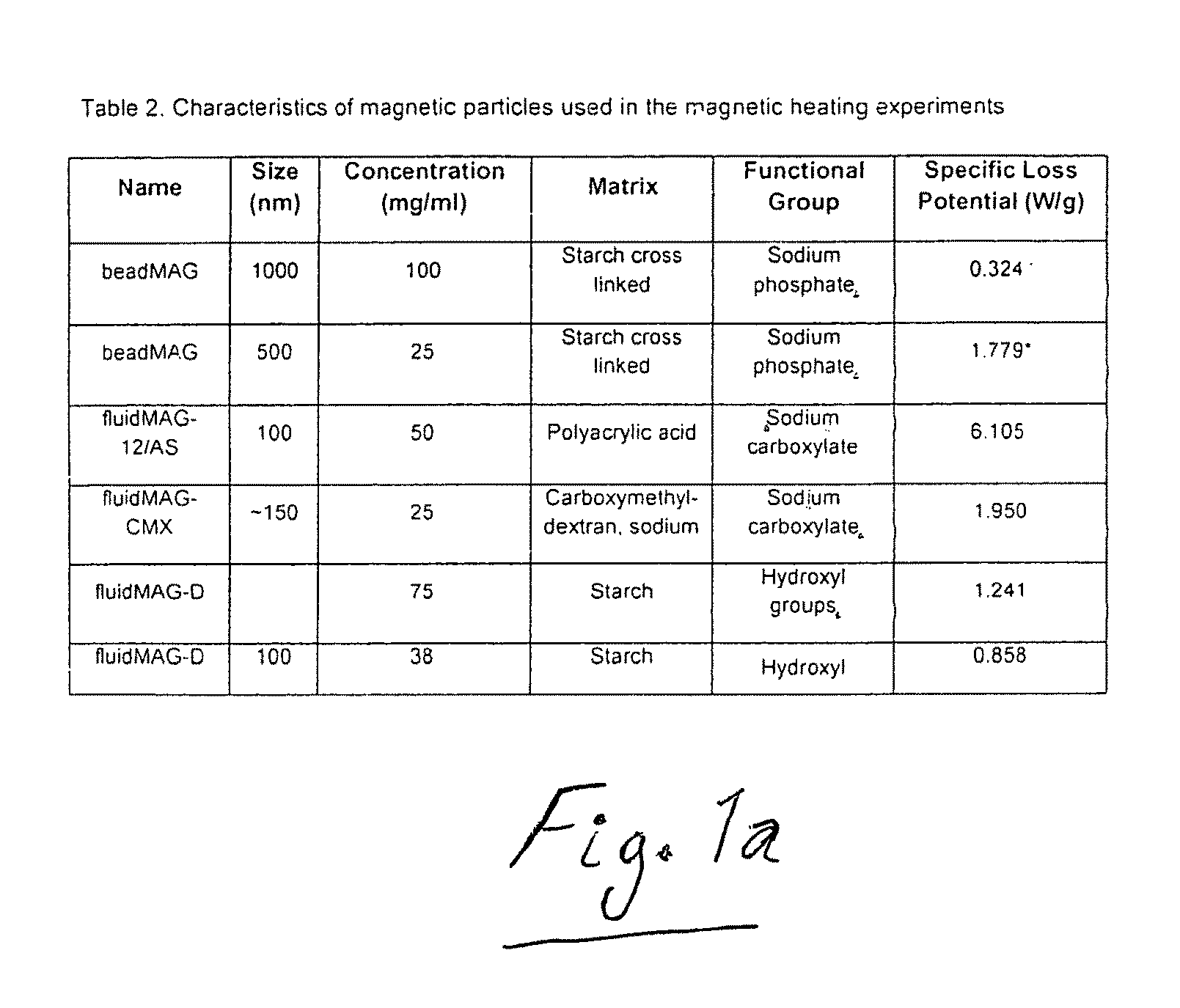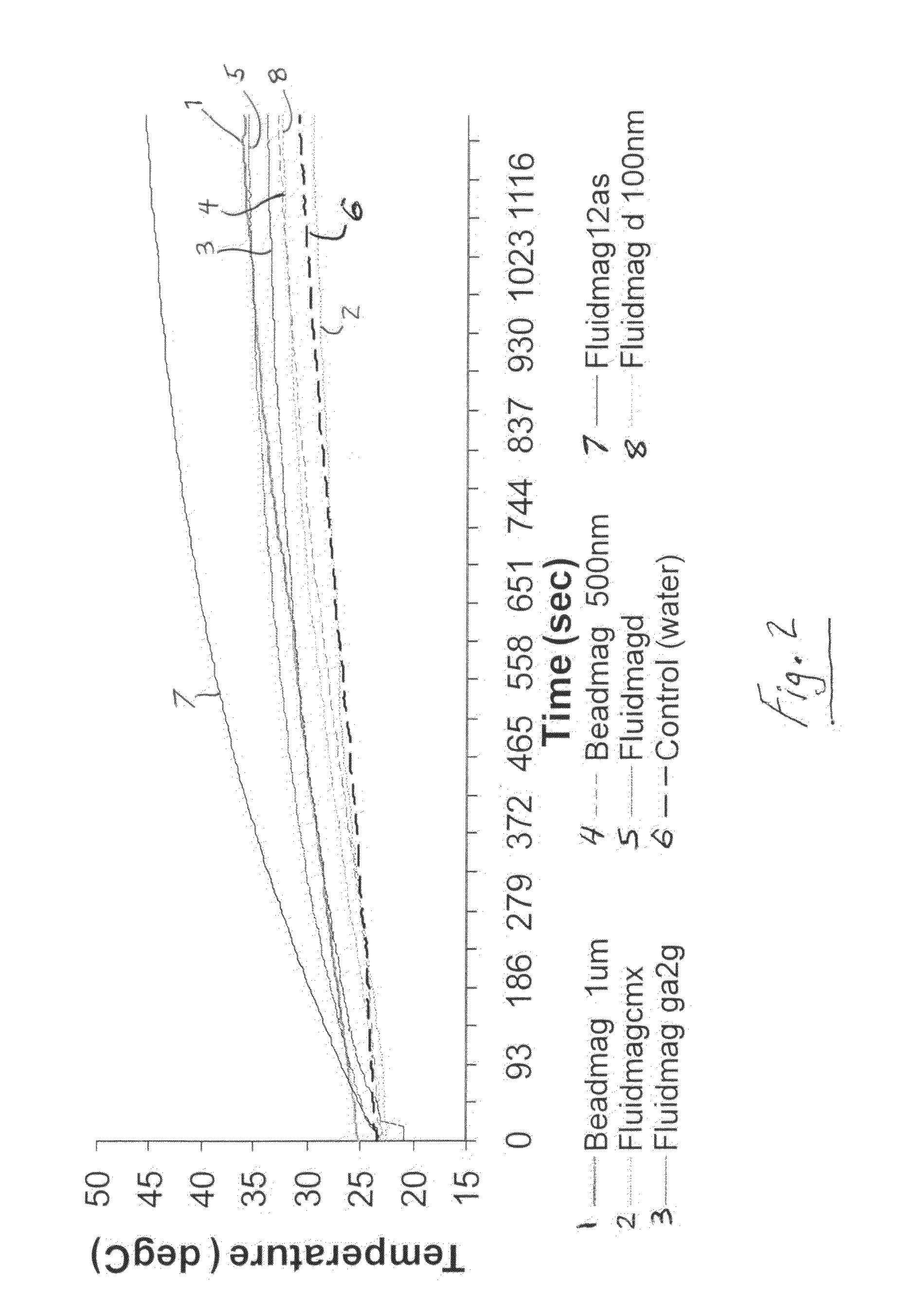Active nanoparticles and method of using
a nanoparticle and multi-functional technology, applied in the field of active, multi-functional nanoparticles, can solve the problems of drug or gene vector inability to reach the intended target, drug efficacy reduction, and failure of therapies, so as to facilitate the release of drugs, enhance the efficacy and/or distribution of carried drugs, and eliminate the effect of bulk heating a lung or other body region
- Summary
- Abstract
- Description
- Claims
- Application Information
AI Technical Summary
Benefits of technology
Problems solved by technology
Method used
Image
Examples
example 1
[0062]This Example investigated the potential of magnetic nanoparticles for enhancing drug delivery using a low oscillating magnetic field strength of 3.1 kA / m, which is lower than the field strengths previously used heretofore for other biomedical applications. The ability of magnetic nanoparticles to cause disruption of viscous biopolymer barriers to drug delivery and the potential to induce triggered release of drug conjugated to the surfaces of these particles under these mild oscillating magnetic field conditions was investigated.
[0063]The testing showed magnetic nanoparticles can be used to cause significant disruption to viscous biopolymers that cause hindered drug transport and inefficient delivery and also demonstrate the potential to trigger drug release of drug conjugated to magnetic nanoparticle surfaces using these biocompatible magnetic field conditions.
[0064]In this Example, magnetic nanoparticles, commonly referred to as superparamagnetic iron oxide nanoparticles (SP...
example 2
[0089]This example relates to enhanced magnetic nanoparticle transport through models of Pseudomonas aeruginosa biofilm and cystic fibrosis mucus.
[0090]Presence of viscous mucus transport barrier within the airways and the development of mucoid Pseudomonas aeruginosa colonies greatly reduce the efficacy of inhaled therapies in cystic fibrosis (CF) patients. This example involves use of superparamagnetic nanoparticles that exhibit both thermal and magnetic properties to increase transport through in vitro models of CF mucus and alginate biofilms. In vitro CF biological barrier models were modified from the literature to mimic the composition of in vivo samples of CF respiratory secretions and P. aeruginosa infections for transport studies. Wide field imaging for single particle tracking was used to quantify transport of particles in in vitro models under different temperature and magnetic presence. Nanoparticle trajectories showed that thermal energy on nanoparticle transport in thes...
example 3
[0107]This Example illustrates enhancing of particle transport through a biofilm model using static magnetic fields and non-magnetic drug particles. Drug delivery is enhanced by the magnetic pull of magnetic nanoparticles and their formation of channels:
[0108]To further investigate the effect of channel formation by nanoparticles on drug delivery we used single particle tracking on Qdots 655 and Qtracker 655 in both a mucin and alginate model. Magnetic nanoparticles and either Qdot 655 or Qtracker 655 were mixed separately with either mucin or alginate model and the Qdots were tracked at a single particle level with or without a magnetic field. Qtracker 655 that are only coated in PEG polymer were found to have roughly twice the movement as Qdot 655 which are functionalized with biotin, indicating an influence of functional groups on movement in alginate, though this was not seen in mucin. Particles were pulled under a magnetic field under the influence of motion by magnetic nanopar...
PUM
 Login to View More
Login to View More Abstract
Description
Claims
Application Information
 Login to View More
Login to View More - R&D
- Intellectual Property
- Life Sciences
- Materials
- Tech Scout
- Unparalleled Data Quality
- Higher Quality Content
- 60% Fewer Hallucinations
Browse by: Latest US Patents, China's latest patents, Technical Efficacy Thesaurus, Application Domain, Technology Topic, Popular Technical Reports.
© 2025 PatSnap. All rights reserved.Legal|Privacy policy|Modern Slavery Act Transparency Statement|Sitemap|About US| Contact US: help@patsnap.com



